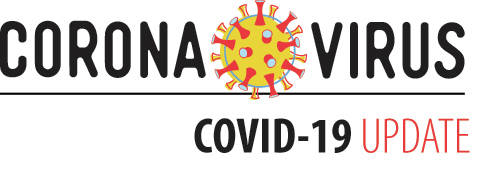
The COVID-19 case rate in Highland County has dropped significantly, standing at 62.56 cases per 100,000 in population, according to a Wednesday Facebook post by Highland County Health Commissioner Jared Warner.
According to Ohio Department of Health (ODH) Public Health Advisory System, which was last updated Thursday, Highland County had 67.19 COVID-19 cases per 100,000 in population on a 14-day average. Over the last two weeks, the county has had 29 new cases of the coronavirus.
This week brings a change in the county’s emergency level, moving it to an “Orange” Level 2. Level 2 means “increased exposure and spread” and people should exercise a “high degree of caution.”
“About half of the states are seeing some case increases, and the other half are holding steady or still seeing their case counts drop,” Warner wrote.
Gov. Mike DeWine updated Ohioans on variant spread in the state Thursday, saying that the case rate in Ohio is over 200 per a population of 100,000, when it was at 144 four weeks ago.
“What we’re seeing in Ohio is a strong variant that is multiplying very quickly and is more contagious than the virus we’ve seen in the past, but we have hope, and hope is the vaccine,” DeWine said. “Vaccination is how we get out of this.”
He said a majority of the counties with the highest case rates in the state are in the north, which are seeing a “high level” of variant cases. He said the county seeing the highest case rate is Lucas County with 341.1 cases per 100,000 in population.
Franklin County has moved up to a “Purple” Emergency Level 4 on the Public Health Advisory System because of its increase in COVID-related emergency room visits, outpatient visits and hospital admissions.
Warner also gave an update on the nationwide pause on the Johnson & Johnson (J&J) vaccine. The pause came after six people had a serious blood clot condition after receiving this vaccine.
“The pause is intended to allow time to prepare health care providers to recognize and diagnose patients, treat them appropriately, and report cases that may be related to the vaccine,” Warner said.
He said about 6.85 million doses of the J&J have been administered in the U.S. All six of the cases of the rare clotting condition, according to Warner, happened to women between the ages of 18-49 and between six to 13 days after their J&J vaccine.
He said the condition is treatable, but that doctors need to know how to recognize it, how to report it and how to treat it.
“This pause is the right thing to do to ensure that happens. We have safety systems in place to flag that work. We are doing our due diligence in responding to those systems with this pause,” Warner said.
Warner stressed that for people that received the J&J vaccine more than a month ago, the risk to get the condition is “very low” and he encouraged people with currently scheduled appointments for the Pfizer and Moderna vaccines to keep them and move forward with their vaccination.
Reach Jacob Clary at 937-402-2570.


